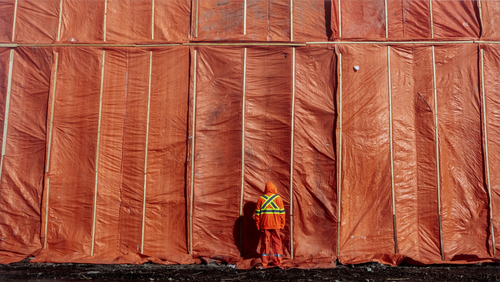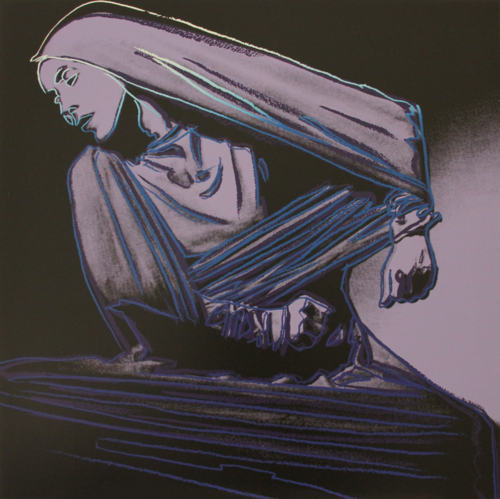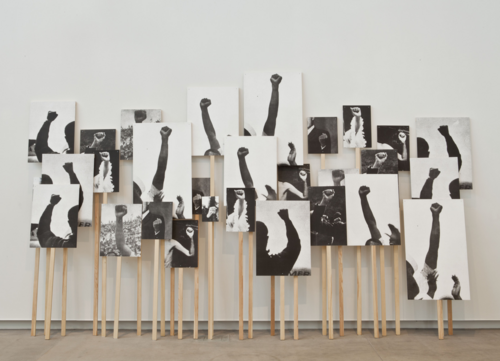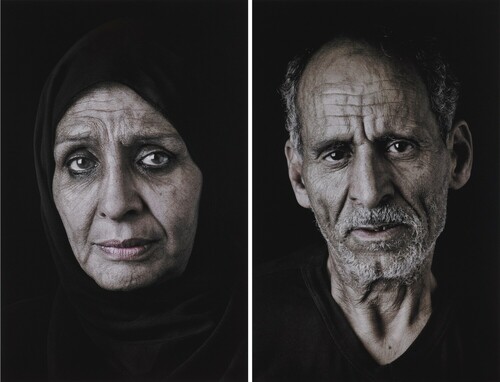Symbols in Art and Math
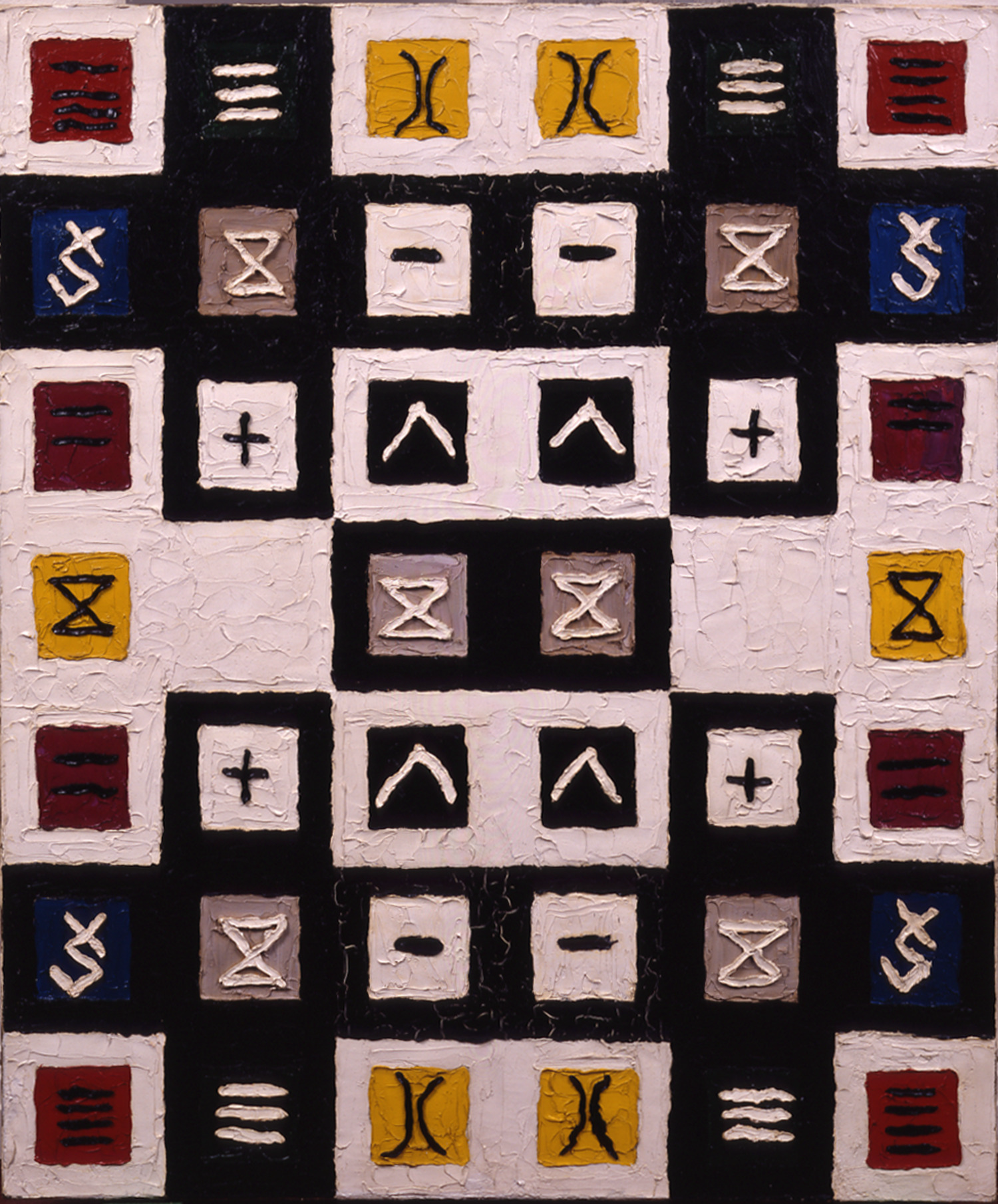
Let’s take a close look at a painting by Alfred Jensen, an artist fascinated by the meaningful patterns found in number systems, in order to explore the role of symbols in both art and math.
Symbols in Art & Math
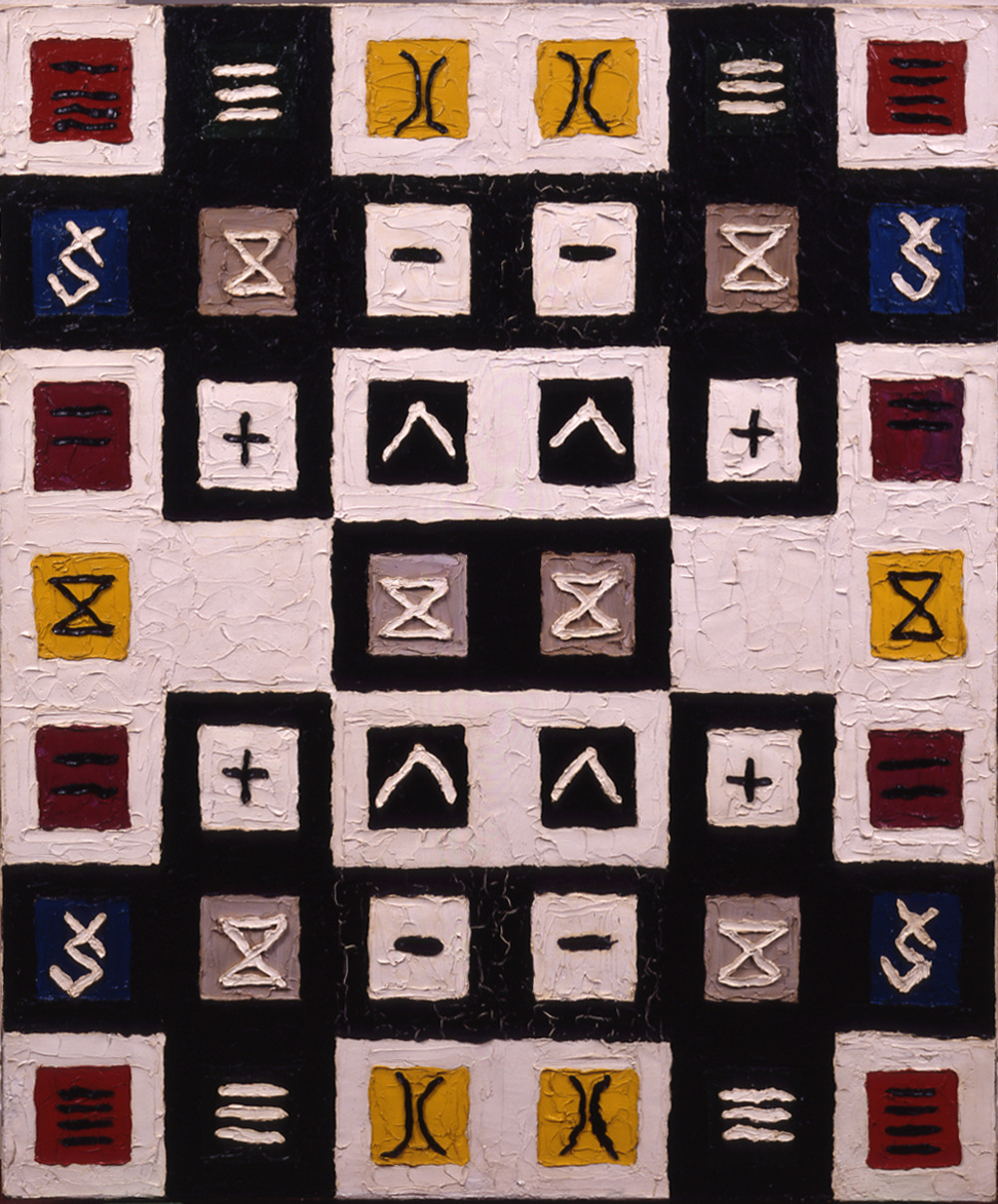
Spend some time looking at this picture. What do you notice?
Do you see any patterns?
This painting is by the artist Alfred Jensen, who lived from 1903 to 1981. In Great Mystery I [Chinese Origin of the Decimal System! External Placement], Jensen painted ancient Chinese numerals over small squares arranged on a black-and-white patterned background.
A numeral is a symbol that stands for a number. During China's Shang dynasty in the second millennium BCE, one way in which people wrote texts and expressed numbers was by carving symbols into animal bones and pieces of turtle shell. This early writing and numerical system is called oracle bone script and was an ancestor of modern Chinese characters, which are used for the writing of Chinese and some other East Asian languages.
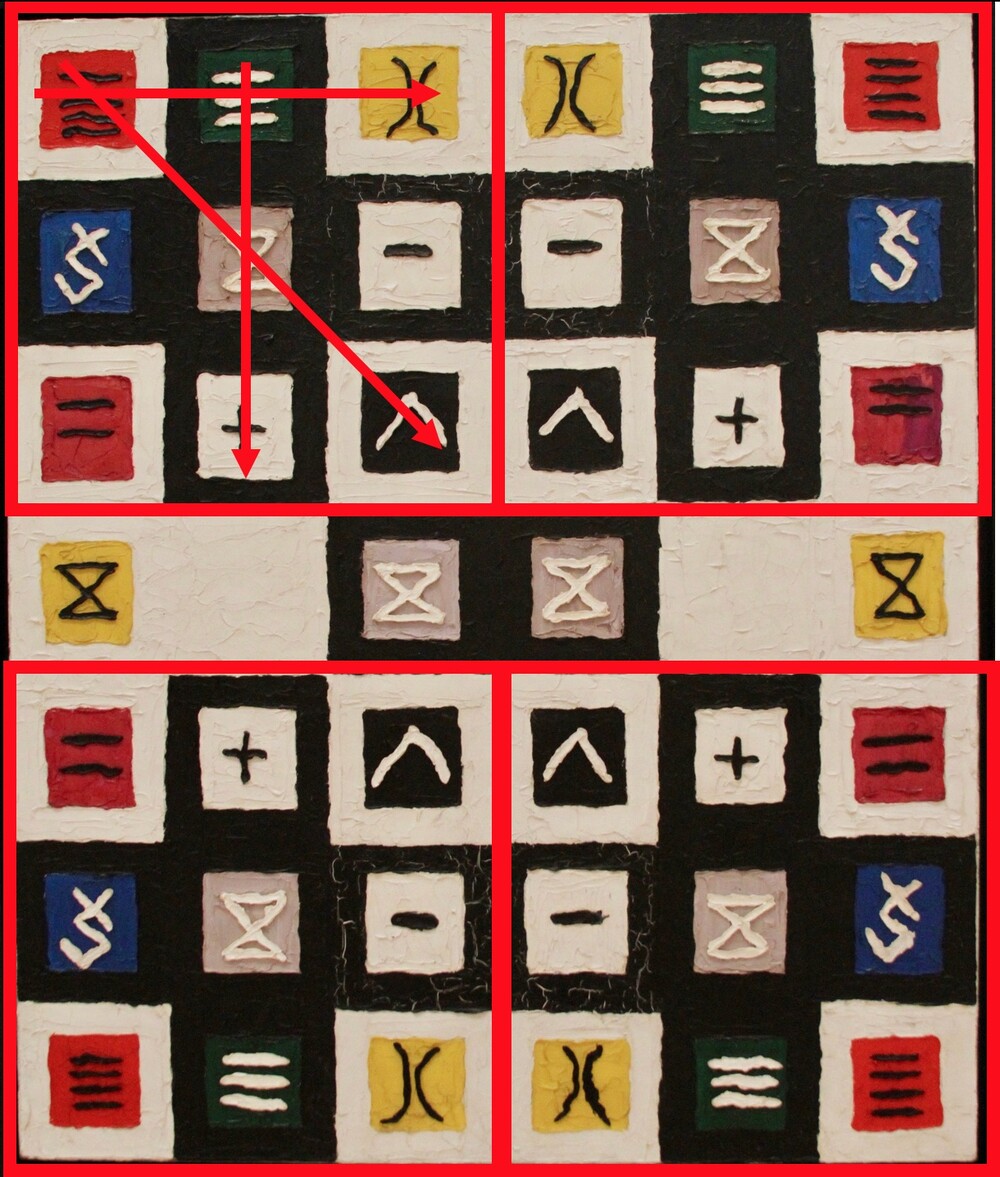
Jensen organized the oracle bone script numerals in this painting to include four Lo Shu squares—grids made up of nine different numbers in which the sum of the numbers in each horizontal row, vertical column, and diagonal is equivalent. Lo Shu squares have a long and fascinating history. Legend has it that Yu the Great, founder of the Xia dynasty in ancient China, saw a magical turtle bearing a Lo Shu pattern on its shell emerge from the water of the Luo River. At different points in history the Lo Shu square was an important model for concepts of time and space and was used to help with city planning and the design of tombs and temples.
Are you ready for a challenge?
Let's decode this painting to figure out the sum of the numerals in each row, column, and diagonal of the Lo Shu squares. Use this key to convert the oracle bone script numerals into the Arabic numerals 1 through 9:

What do you think the solution is?
The sum of each row, column, and diagonal in each Lo Shu square is...
…15!
Congratulations, you just decoded the Lo Shu squares in Jensen's painting using a numeral system that is 4,000 years old.
Alfred Jensen was interested in how math can be understood as a visual language in which geometric shapes and symbols must be decoded to understand their meaning. In both art and math, symbols are used to represent concepts and values.
Algebra is the study of mathematical symbols. In algebra, Latin and Greek letters are used to represent quantities without fixed values, known as variables. We can use our knowledge of algebra to solve equations and find the values of variables. In art, objects, colors, and shapes can act as symbols that represent ideas, and we can decode these symbols using our knowledge of history and culture.
Create
You can create your own numeral system by drawing a symbol to represent each number between zero and nine. What algebraic and visual patterns can you create using your numeral system? Share a key with a friend and see if they can crack your code!
Notes
Alfred Jensen (American, 1903–1981), Great Mystery I [Chinese Origin of the Decimal System! External Placement.], 1960. Mixed media on canvas, 50 x 42". Gift of Mr. and Mrs. Richard K. Weil, 1963.
We are committed to encounters with art that inspire creative engagement, social and intellectual inquiry, and meaningful connections across disciplines, cultures, and histories. Do you have ideas or suggestions for other learning resources? Is there an artist or topic that you would like to learn more about? We would love to hear your feedback. Please direct comments or questions to Meredith Lehman, head of museum education, at lehman.meredith@wustl.edu.



